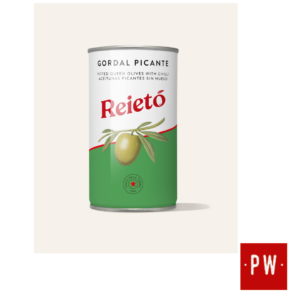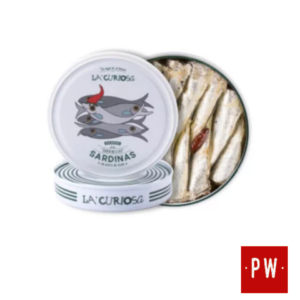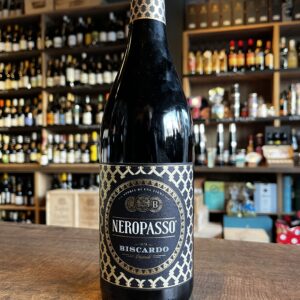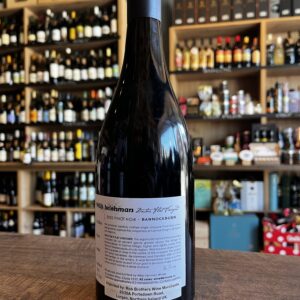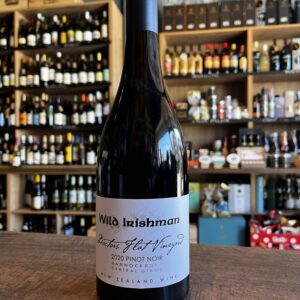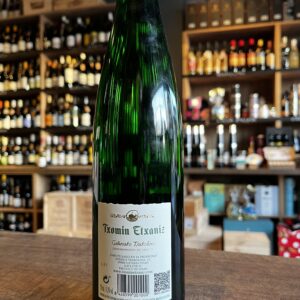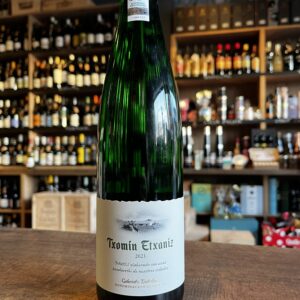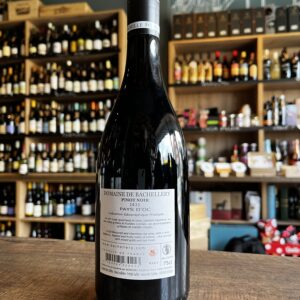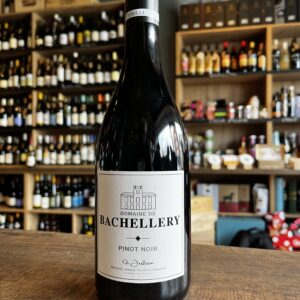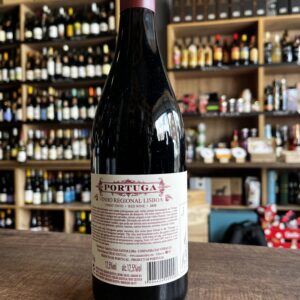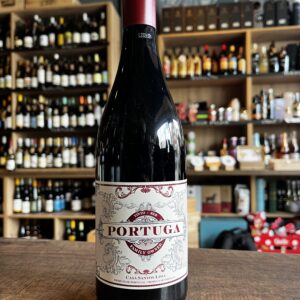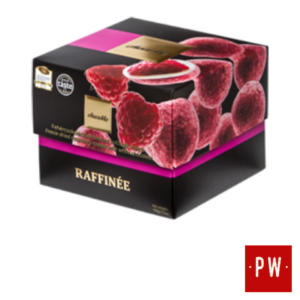-
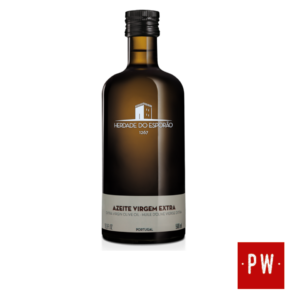 A smooth, harmonious olive oil with a good balance of those fruity aromas typical of the Alentejo. Excellent for cooking and frying in a wide variety of recipes including soups, baking and roasting.
A smooth, harmonious olive oil with a good balance of those fruity aromas typical of the Alentejo. Excellent for cooking and frying in a wide variety of recipes including soups, baking and roasting.Technical sheet
-
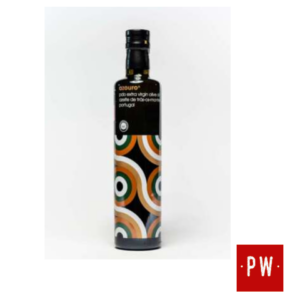 A premium quality oil created from a unique blend of the finest indigenous olive varieties – Verdeal, Madural & Cobrançosa.It has a balanced & harmonious flavour, with a fresh green fruity aroma and a precious golden green colour. There is a sweetness to the taste with notes of almonds, a medium peppery bite & an elegant lasting finish.
A premium quality oil created from a unique blend of the finest indigenous olive varieties – Verdeal, Madural & Cobrançosa.It has a balanced & harmonious flavour, with a fresh green fruity aroma and a precious golden green colour. There is a sweetness to the taste with notes of almonds, a medium peppery bite & an elegant lasting finish. -
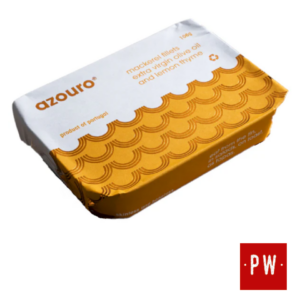 Azouro Mackerel fillets in organic extra virgin olive oil and lemon thyme. 100% pure and premium quality mackerel fillets in organic extra virgin olive oil and lemon thyme. Skinless and boneless. Ready to eat.Eat from the tin, in salads, on toast, as tapas. The freshest fish with the purest olive oil and a hint of lemon thyme (herb) combine to make an incredible taste and flavour sensation.A more interesting way to enjoy tinned fish!Rich in Omega-3 and an excellent source of protein.Canned and packaged by hand in Matosinhos (fishing port), Northern Portugal, combining traditional Portuguese methods with modern technologies and the highest quality standards.
Azouro Mackerel fillets in organic extra virgin olive oil and lemon thyme. 100% pure and premium quality mackerel fillets in organic extra virgin olive oil and lemon thyme. Skinless and boneless. Ready to eat.Eat from the tin, in salads, on toast, as tapas. The freshest fish with the purest olive oil and a hint of lemon thyme (herb) combine to make an incredible taste and flavour sensation.A more interesting way to enjoy tinned fish!Rich in Omega-3 and an excellent source of protein.Canned and packaged by hand in Matosinhos (fishing port), Northern Portugal, combining traditional Portuguese methods with modern technologies and the highest quality standards. -
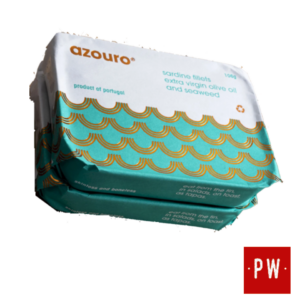 Award-winning sardines in extra virgin olive oil,on a bed of organic seaweed (Sea Lettuce & Bladderwrack). Combine to make an incredibly delicate taste, and umami flavour sensation. Our fish are rich in Omega-3 and an excellent source of protein. Prepared, canned, and packaged by hand in Matosinhos (fishing port), Northern Portugal, combining traditional Portuguese methods with modern technologies and the highest quality standards. Our fish is skinless, boneless, and ready to eat from the tin, in salads, on toast, or as tapas.
Award-winning sardines in extra virgin olive oil,on a bed of organic seaweed (Sea Lettuce & Bladderwrack). Combine to make an incredibly delicate taste, and umami flavour sensation. Our fish are rich in Omega-3 and an excellent source of protein. Prepared, canned, and packaged by hand in Matosinhos (fishing port), Northern Portugal, combining traditional Portuguese methods with modern technologies and the highest quality standards. Our fish is skinless, boneless, and ready to eat from the tin, in salads, on toast, or as tapas. -
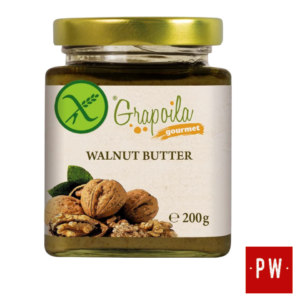 Grapoila uses Zero Waste production meaning, that all created by-products are used for further purposes, nothing goes to waste. Gourmet seed butters are created after settling and filtering the cold-pressed oils, without the use of any additives, preservatives, colouring agents. Due to the gentle process of cold-pressing they fully preserve the valuable ingredients of the high-quality seeds. Its cold-pressed oil content is high and it also contains the fine microparts of the seeds. Almond butter is rich in unsaturated fatty acids, Vitamin E and other antioxidant ingredients. It is a good source of fibre and minerals like potassium, magnesium, calcium, as well as in cholin, that support certain functions of the nervous system. Almond butter is a versatile gourmet food with the natural taste of the raw almonds. It can be used for making creams, fillings, sauces, pastry doughs, or simply adding to shakes and smoothies.
Grapoila uses Zero Waste production meaning, that all created by-products are used for further purposes, nothing goes to waste. Gourmet seed butters are created after settling and filtering the cold-pressed oils, without the use of any additives, preservatives, colouring agents. Due to the gentle process of cold-pressing they fully preserve the valuable ingredients of the high-quality seeds. Its cold-pressed oil content is high and it also contains the fine microparts of the seeds. Almond butter is rich in unsaturated fatty acids, Vitamin E and other antioxidant ingredients. It is a good source of fibre and minerals like potassium, magnesium, calcium, as well as in cholin, that support certain functions of the nervous system. Almond butter is a versatile gourmet food with the natural taste of the raw almonds. It can be used for making creams, fillings, sauces, pastry doughs, or simply adding to shakes and smoothies. -
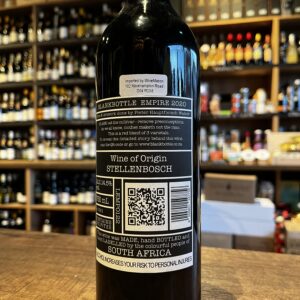
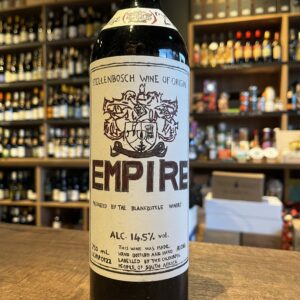 The story of this wine told by Peter Hauptfleisch himself-''Today I'm standing up to defend the EMPIRE - STELLENBOSCH. Silently, she’s been re-aligning her troops and now strikes back at the Swartland to establish herself yet again as a formidable force. Just for the record - I am a huge fan of Swartland white blends. The image of South African wines has changed dramatically over the past 10 years and the Swartland played a huge part in this. Their wines, especially the Rhône-style white blends are top notch. They are fun, young, energetic and unique and started to gain international fame. Stellenbosch, however (where I studied winemaking), is the original EMPIRE of South African wine. Like most of us, I like to support the underdog, and in the case of white blends, the Empire became exactly that. So I created a white blend based on similar varieties - a combination that could give some of the Swartland white blends a go. The empire is therefore now striking back at the Swartland with a blend of an all-Stellenbosch Verdelho, Pinot blanc, Sauvignon blanc, Roussanne, Marsanne, Chardonnay, Chenin blanc and Viognier. The label consists of two sections. On the left part of the label you will see a half star, which was the logo for the "Swartland Revolution". And on the right - stripes that represent a traditional and conservative EMPIRE. And the red brother of Empire Strikes Back is EMPIRE - not striking back but just being himself. With Cabernet Sauvignon as driver and bits of Merlot and Cabernet franc to compliment. The old style design label shows a combination crest. I combined the crest of Stellenbosch University and Elsenburg College - The 2 Empires when it comes to wine education - I studied at both...'' In another words this red was created to strike back at the popularity of the whites and with its quality to balance the market. I dont it was needed as the reds quality is a great as the counterparts.
The story of this wine told by Peter Hauptfleisch himself-''Today I'm standing up to defend the EMPIRE - STELLENBOSCH. Silently, she’s been re-aligning her troops and now strikes back at the Swartland to establish herself yet again as a formidable force. Just for the record - I am a huge fan of Swartland white blends. The image of South African wines has changed dramatically over the past 10 years and the Swartland played a huge part in this. Their wines, especially the Rhône-style white blends are top notch. They are fun, young, energetic and unique and started to gain international fame. Stellenbosch, however (where I studied winemaking), is the original EMPIRE of South African wine. Like most of us, I like to support the underdog, and in the case of white blends, the Empire became exactly that. So I created a white blend based on similar varieties - a combination that could give some of the Swartland white blends a go. The empire is therefore now striking back at the Swartland with a blend of an all-Stellenbosch Verdelho, Pinot blanc, Sauvignon blanc, Roussanne, Marsanne, Chardonnay, Chenin blanc and Viognier. The label consists of two sections. On the left part of the label you will see a half star, which was the logo for the "Swartland Revolution". And on the right - stripes that represent a traditional and conservative EMPIRE. And the red brother of Empire Strikes Back is EMPIRE - not striking back but just being himself. With Cabernet Sauvignon as driver and bits of Merlot and Cabernet franc to compliment. The old style design label shows a combination crest. I combined the crest of Stellenbosch University and Elsenburg College - The 2 Empires when it comes to wine education - I studied at both...'' In another words this red was created to strike back at the popularity of the whites and with its quality to balance the market. I dont it was needed as the reds quality is a great as the counterparts. -
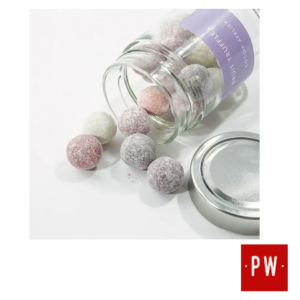 Introducing Cocoa Atelier Fruit Truffles, an exquisite confection that combines the lusciousness of Pate de Fruit centers with an almond and chocolate coating, delicately dusted with confectioner’s sugar. First and foremost, the journey begins with the carefully crafted Pate de Fruit centers. Made from real fruit puree, these delectable centers burst with the natural sweetness and essence of the finest fruits. Each bite offers a delightful explosion of fruity goodness that awakens your taste buds and leaves a lasting impression.
Introducing Cocoa Atelier Fruit Truffles, an exquisite confection that combines the lusciousness of Pate de Fruit centers with an almond and chocolate coating, delicately dusted with confectioner’s sugar. First and foremost, the journey begins with the carefully crafted Pate de Fruit centers. Made from real fruit puree, these delectable centers burst with the natural sweetness and essence of the finest fruits. Each bite offers a delightful explosion of fruity goodness that awakens your taste buds and leaves a lasting impression. -
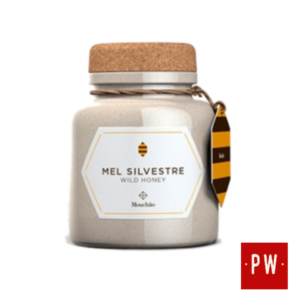 Although beehives have existed in Mouchão for over a century, honey was first commercially sold in 2011. In the expansive and natural surroundings of the estate, bees craft this wild honey with pollen from native shrubs, trees, and wild meadows. Beekeeping intervention is limited almost exclusively to harvesting. The honey, due to its purity, tends to thicken over time and can vary both in consistency and in its darker golden hue. Usually with a thick but smooth texture, it has floral highlights of orange blossom, wild lavender, and jasmine, with undertones of biscuit, butter, and dried fruits. As this is a raw honey, over the months it tends to thicken and can vary both in consistency and in darker golden hues.
Although beehives have existed in Mouchão for over a century, honey was first commercially sold in 2011. In the expansive and natural surroundings of the estate, bees craft this wild honey with pollen from native shrubs, trees, and wild meadows. Beekeeping intervention is limited almost exclusively to harvesting. The honey, due to its purity, tends to thicken over time and can vary both in consistency and in its darker golden hue. Usually with a thick but smooth texture, it has floral highlights of orange blossom, wild lavender, and jasmine, with undertones of biscuit, butter, and dried fruits. As this is a raw honey, over the months it tends to thicken and can vary both in consistency and in darker golden hues. -
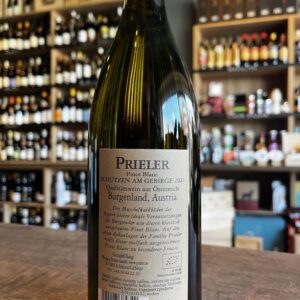
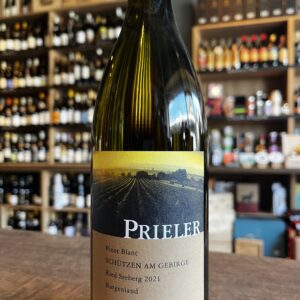 Old vines are the fortune of every vintner. They root deeply and lend their intrinsic potential a persistent voice. Pinot Blanc, also locally called Weissburgunder, has a long tradition in our region. My grandfather planted most of our vines in the limestone of the Seeberg site 60 years ago. A few were even planted by my grandfather over 90 years ago. It is my duty today to continue to tell the story that the two of them began.
Old vines are the fortune of every vintner. They root deeply and lend their intrinsic potential a persistent voice. Pinot Blanc, also locally called Weissburgunder, has a long tradition in our region. My grandfather planted most of our vines in the limestone of the Seeberg site 60 years ago. A few were even planted by my grandfather over 90 years ago. It is my duty today to continue to tell the story that the two of them began. -
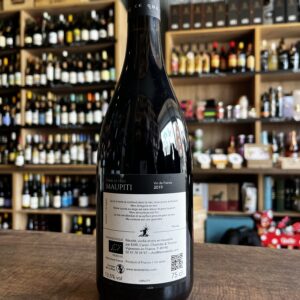
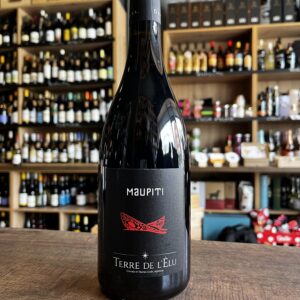 In January 2008, Charlotte and Thomas embarked on a marvelous winemaking adventure with the acquisition of the Clos de l’Élu domain, on the schist-rich lands of the Anjou Noir. With many years’ experience as a wine consultant (Thomas), in the fields of communication and management (Charlotte), they are both deeply passionate about the life of this domain which lies on the finest terroirs of the Layon valley. The 20 hectares are farmed organically and the domain offers a structured range of different wines. If it was the Chenin that attracted Thomas to Anjou, the red grape varieties (Cabernet Franc, Grolleau, Pineau d’Aunis, gamay) continue to inspire him with deep, rich vintages that are expressive and full of finesse. The team is driven by strong convictions, from the work in the vineyard to the cellar, in order to produce wines that truly reflect the terroir. In the vineyards: the whole domain was converted to organic farming in April 2010 (first certified organic vintage in 2013), severe disbudding, appropriate pruning modes depending on the grape variety and plot, soil work, manual harvest in 20 kg boxes, draconian sorting while harvesting. In the cellar: use of gravity as much as possible, natural fermentations, winemaking choice favoring the least manipulation of the grapes possible, winemaking of the reds in whole bunches, maceration and aging in tanks, weathered (or aged) barrels or clay amphorae.
In January 2008, Charlotte and Thomas embarked on a marvelous winemaking adventure with the acquisition of the Clos de l’Élu domain, on the schist-rich lands of the Anjou Noir. With many years’ experience as a wine consultant (Thomas), in the fields of communication and management (Charlotte), they are both deeply passionate about the life of this domain which lies on the finest terroirs of the Layon valley. The 20 hectares are farmed organically and the domain offers a structured range of different wines. If it was the Chenin that attracted Thomas to Anjou, the red grape varieties (Cabernet Franc, Grolleau, Pineau d’Aunis, gamay) continue to inspire him with deep, rich vintages that are expressive and full of finesse. The team is driven by strong convictions, from the work in the vineyard to the cellar, in order to produce wines that truly reflect the terroir. In the vineyards: the whole domain was converted to organic farming in April 2010 (first certified organic vintage in 2013), severe disbudding, appropriate pruning modes depending on the grape variety and plot, soil work, manual harvest in 20 kg boxes, draconian sorting while harvesting. In the cellar: use of gravity as much as possible, natural fermentations, winemaking choice favoring the least manipulation of the grapes possible, winemaking of the reds in whole bunches, maceration and aging in tanks, weathered (or aged) barrels or clay amphorae.Technical Sheet
-
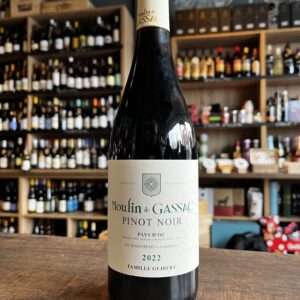 One of the wine films that has had the greatest impact on the industry is undoubtedly Jonathan Nossiter's “Mondovino”. This film was presented at the Cannes Film Festival in 2004, and essentially reflects the conflict between those who understand wine production as a basic artisan work that is completely connected to the land, and those who see it as a corporate business. One of the interviewees featured in the documentary is Aimé Guibert. Creator and champion of the renowned Mas Daumas Gassac, it is thanks to his obsession of giving absolute prominence to the vineyard that he manages to extol the quality of the wines of Languedoc, a region historically known for producing low quality table wines. So when Robert Mondavi, a wine magnate, became interested in this still under used region, Aimé fought with all his might until Mondavi withdrew from his venture. Now, it is his children who continue to protect this legacy with the same passion. A legacy based not so much on the category of the wine as on its quality. Although these wines only carry the vin de pays de l'Oc label, they are considered by great wine specialists to be the “Lafite Rothschilds” of Languedoc-Roussillon.
One of the wine films that has had the greatest impact on the industry is undoubtedly Jonathan Nossiter's “Mondovino”. This film was presented at the Cannes Film Festival in 2004, and essentially reflects the conflict between those who understand wine production as a basic artisan work that is completely connected to the land, and those who see it as a corporate business. One of the interviewees featured in the documentary is Aimé Guibert. Creator and champion of the renowned Mas Daumas Gassac, it is thanks to his obsession of giving absolute prominence to the vineyard that he manages to extol the quality of the wines of Languedoc, a region historically known for producing low quality table wines. So when Robert Mondavi, a wine magnate, became interested in this still under used region, Aimé fought with all his might until Mondavi withdrew from his venture. Now, it is his children who continue to protect this legacy with the same passion. A legacy based not so much on the category of the wine as on its quality. Although these wines only carry the vin de pays de l'Oc label, they are considered by great wine specialists to be the “Lafite Rothschilds” of Languedoc-Roussillon. -
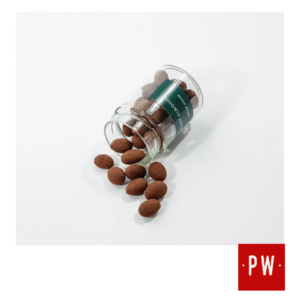 Cocoa Atelier Velvet Almonds are not just confections; they are an embodiment of craftsmanship, an homage to the finest ingredients, and a celebration of taste. Whether you indulge in them as an elegant accompaniment to a fine cup of coffee, as a luxurious addition to a dessert platter, or simply as a treat to savour in moments of quiet indulgence, these almonds will redefine your perception of chocolate-covered nuts.
Cocoa Atelier Velvet Almonds are not just confections; they are an embodiment of craftsmanship, an homage to the finest ingredients, and a celebration of taste. Whether you indulge in them as an elegant accompaniment to a fine cup of coffee, as a luxurious addition to a dessert platter, or simply as a treat to savour in moments of quiet indulgence, these almonds will redefine your perception of chocolate-covered nuts. -
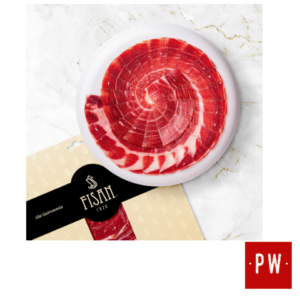 One of FISAN’s most prized products in a practical format to delight your palate with the most extraordinary nuances of 100% Iberico Bellota Ham Alta Gastronomia at any time and place. Its secret: the selection from the earliest stage of the best pure Iberico breed pigs, patience and curing in our natural cellars in Guijuelo, which leads to the best Pata Negra Ham you will ever remember. Only the most exceptional pieces qualify as Alta Gastronomia.
One of FISAN’s most prized products in a practical format to delight your palate with the most extraordinary nuances of 100% Iberico Bellota Ham Alta Gastronomia at any time and place. Its secret: the selection from the earliest stage of the best pure Iberico breed pigs, patience and curing in our natural cellars in Guijuelo, which leads to the best Pata Negra Ham you will ever remember. Only the most exceptional pieces qualify as Alta Gastronomia. -
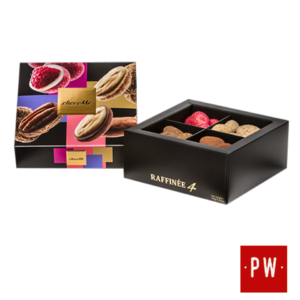 All the best Raffinée can offer in one exclusive selection - that's what Raffinée 4 is all about. We put together this diverse assortment of four of our most characteristic, multiple award-winning creations, reviewed by professional jury teams, for your enjoyment. Almonds from Avola coated with milk chocolate and tonka beans Freeze-dried raspberry coated with white chocolate Sicilian almonds coated with Guérande salty blonde chocolate and crispy wafer Pecans covered in milk chocolate mixed with caramel and salted vanilla powder from Tahiti
All the best Raffinée can offer in one exclusive selection - that's what Raffinée 4 is all about. We put together this diverse assortment of four of our most characteristic, multiple award-winning creations, reviewed by professional jury teams, for your enjoyment. Almonds from Avola coated with milk chocolate and tonka beans Freeze-dried raspberry coated with white chocolate Sicilian almonds coated with Guérande salty blonde chocolate and crispy wafer Pecans covered in milk chocolate mixed with caramel and salted vanilla powder from Tahiti -
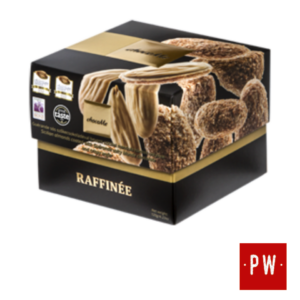 The thin, long almonds from Sicily are creamy and free of any sourness in aftertaste. We mix them with crispy wafer and give them a blonde chocolate bath, through which they acquire the elementary characteristic caramel notes thanks to the Guérande salt. We roll the almonds with a thin layer of wafer, to make them even more crispy.
The thin, long almonds from Sicily are creamy and free of any sourness in aftertaste. We mix them with crispy wafer and give them a blonde chocolate bath, through which they acquire the elementary characteristic caramel notes thanks to the Guérande salt. We roll the almonds with a thin layer of wafer, to make them even more crispy. -
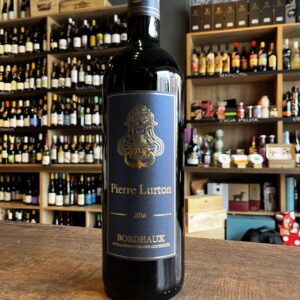 Bordeaux Pierre Lurton is a wine produced by Pierre Lurton in his namesake wine cellars. He draws directly from his knowledge acquired in the most prestigious properties of Bordeaux. Thus, this wine is rigorously selected by Pierre Lurton.The colour of the label also reflects the classic colour of the mansions of Gironde´s capital.
Bordeaux Pierre Lurton is a wine produced by Pierre Lurton in his namesake wine cellars. He draws directly from his knowledge acquired in the most prestigious properties of Bordeaux. Thus, this wine is rigorously selected by Pierre Lurton.The colour of the label also reflects the classic colour of the mansions of Gironde´s capital.


